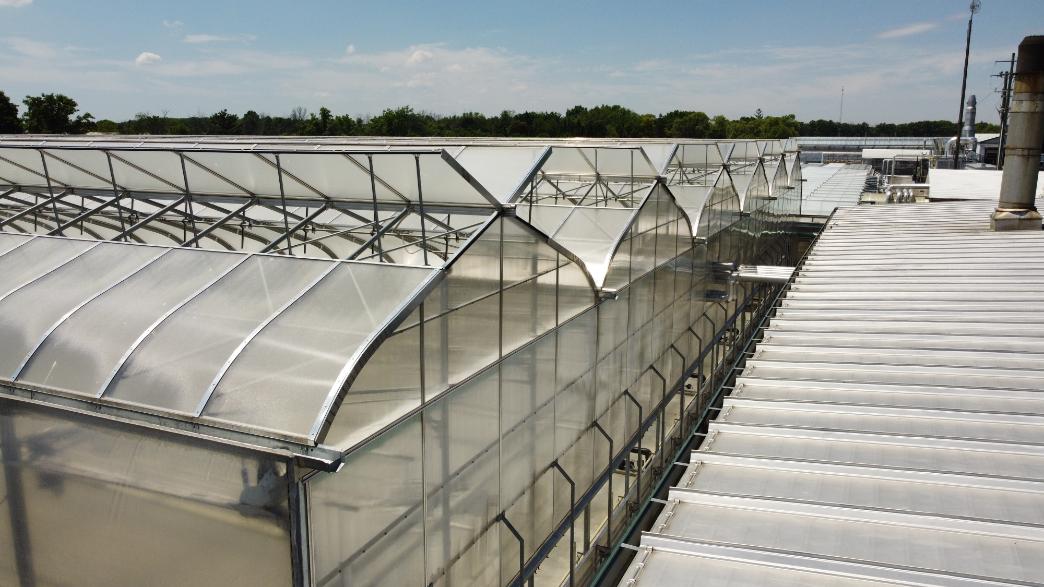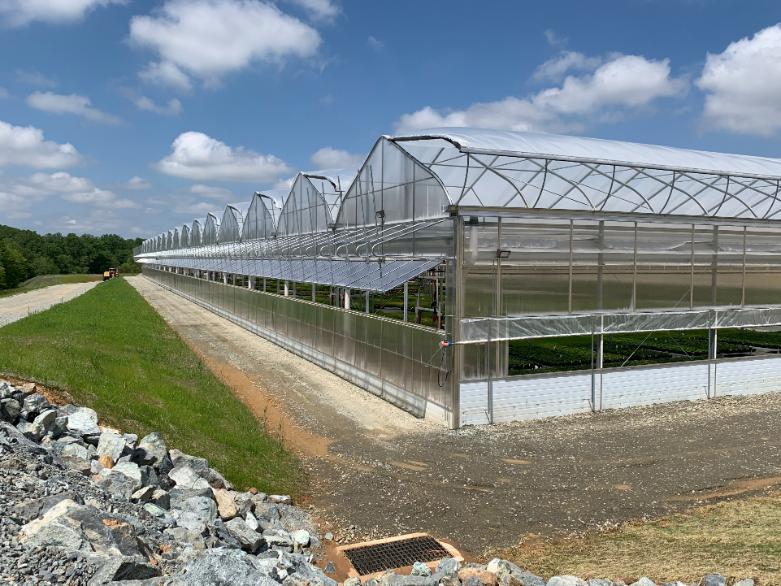An Introduction to Greenhouse Hydroponics for Potted Plants
What is Hydroponics?
Hydroponics is a method of growing plants using mineral nutrient solutions in water. This is accomplished without soil, either putting the roots directly into the water, as is common with lettuce pools, or rooted in a medium, such as perlite, rockwool, or coconut husks, which is more common for potted plants. Because the nutrients are dissolved in water, they go directly to the roots. Soil can provide a buffer, with hydroponics the roots get exactly what is put into solution.
How can a Grower start growing with Hydroponics?
If you have not previously been growing this way, the most logical investment is ebb and flood benches. Flood benches come in varying widths, and the lengths are modular as the stand spacing and flood trays are designed to accommodate expansion. Start simple, once this growing method becomes comfortable, then expand and maximise the efficiency afforded by a flood system.
- The plant leaves & flowers stay dry, reducing fungal and bacterial diseases by reducing greenhouse humidity
- H2O surrounding the roots, means lots of Oxygen is provided to the root system, which reduces root disease and increases crop growth. Oxygen aids the transmission of nutrients through the roots, as oxygen levels increase, nutrient absorption levels also increase
- Enables the grower to use a “closed irrigation system”, eliminating water wastage and saves fertilizer by collecting and recycling the fertilized water
- If a manual watering method has been the irrigation method used, flood systems will greatly lower labour costs
- Even, and consistent application of fertilizers and watering resulting in uniform plant growth
- Flood benches require very little maintenance. A quick clean of the trays and drains between crops and the maintenance is complete
- Ebb and Flood benches work with flats as well as pots, there are no changes necessary to adapt to different pot sizes if your product mix is varies
What Potted Plants Grow Well on an Ebb and Flood Bench?
Ebb & flood benches are ideal for crops with short finishing times where a quick turnaround of the crop provides a short payback period, and also for plants that are susceptible to botrytis and phytophtora. Crops like cyclamen, poinsettia, kalanchoe, exacum, gerbera, and hydrangea, potted colour and tomato seedlings benefit enormously from Ebb & Flood watering.
How Flood Irrigation Works
Ebb and Flood Benches and Flood Floors are sometimes referred to as Sub-irrigation. Fertigation is supplied from under the plant rather than hand watering or irrigation booms which irrigate from above the plant wetting the foliage and opening the plant up to a variety of diseases.
It is important to match your irrigation method to your heating, as under bench heating and under floor heating improves control of root and foliage temperatures with less dependence on chemicals, so you can receive the full benefit for enhanced plant growth. Heating under the crop also speeds up the drying of your floor or bench which reduces humidity in the greenhouse.
When a crop is flooded you want the entire area to fill quickly with water to 1 – 2 inches, so there is sufficient water above the drainage holes in the pots. Your sub-irrigation system is designed to mix the fertilizer with fresh water; plants draw the fertilized water into the planting medium through their roots when the crop zone is flooded. After a predetermined flood time the system is drained removing excess water. Plants will have taken up only as much water as they need, allowing for a complete irrigation cycle without leaving behind excess water that could result in overwatering and waterlogging the crop. The remaining water returns to a reservoir where it is recirculated.
The bench or floor needs to be pitched properly to allow for even flooding, and even draining of the crop zone. Benches are pitched by using adjustable stands for proper leveling on installation. Floors need to have the concrete poured by an expert in order to ensure an even and consistent pitch.
For more information on Ebb and Flood Benches or Flood Floors Contact Us
Duane Van Alstine has been in the horticulture industry for 20 years. He started as a labourer in a kalancho greenhouse, then was the head grower, and eventually the Operations Manager of a 380,000 square foot facility. In 2011 Duane left the greenhouse to take on Special Projects for GGS Structures Inc., and was later promoted to Manager of Niagrow Systems Ltd. North America’s leading greenhouse heating engineering design firm.








